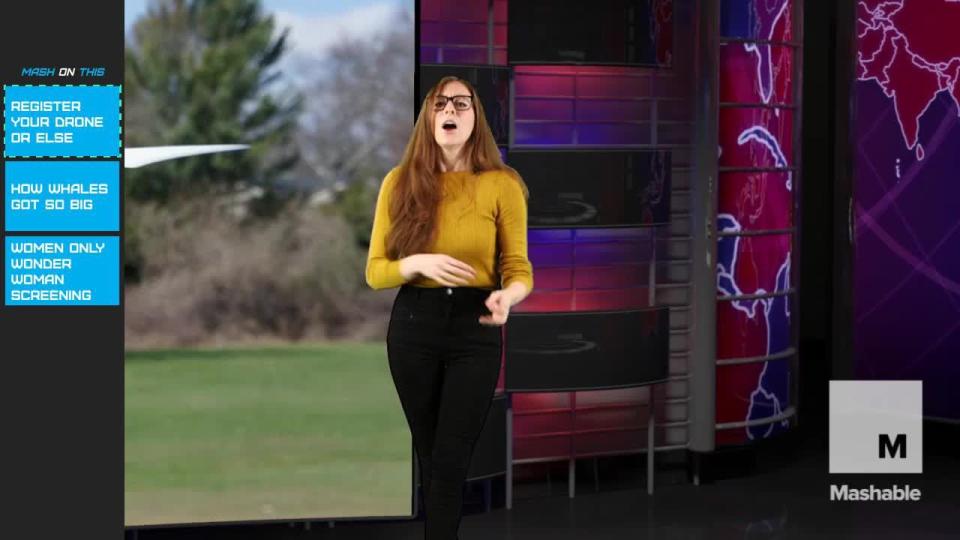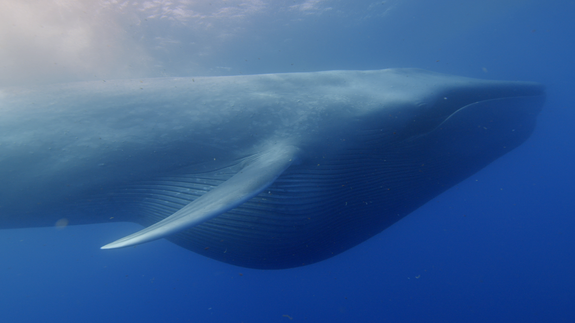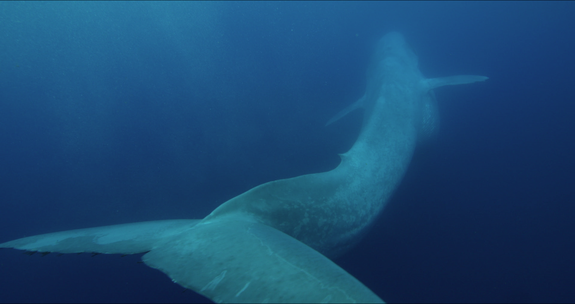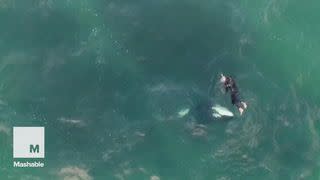How whales went from just big to absolutely enormous


Blue whales are among the biggest creatures on the planet today. But a few million years ago, they were practically petite.
Scientists think they know why these whales gained so much weight.
Environmental changes likely altered the distribution of whales' food supplies in a way that rewarded gargantuan creatures, a new study found. That likely prompted blue whales to balloon ten-fold, from roughly 10 feet long to their present size of up to 100 feet.
SEE ALSO: Dozens of humpback whales have died in the last year and nobody knows why
Scientists traced the transformation of whale sizes back nearly 30 million years. They found that very large whales only appeared along several branches of the family tree some 2 million to 3 million years ago, according to a study published this week in Proceedings of the Royal Society B.
"We live in a time of giants," Jeremy Goldbogen, an author of the paper and a marine biologist at Stanford University, said in a press release. Baleen whales, the filter-feeding beasts that include blue whales, "have never been this big, ever."

Image: silverback films/bbc
Goldbogen and colleagues from the University of Chicago and the Smithsonian National Museum of Natural History measured more than 140 museum specimens of fossilized whales. Using a statistical model, they found that several distinct lineages of baleen whales developed independently of one another starting around 4.5 million years ago.
"...All of a sudden — 'boom' — we see them get very big, like blue whales," Nicholas Pyenson, an author of the paper and the curator of fossil marine mammals at the Smithsonian, told the New York Times.
"It's like going from whales the size of minivans to longer than two school buses," he said.
Their expansion coincided with the early development of ice sheets in the Northern Hemisphere, which likely changed the distribution of the tiny krill and plankton that whales eat.
Up until then, the minuscule prey would've been fairly evenly distributed throughout the ocean. As filter feeders, whales can swallow swarms of crustaceans in a single massive gulp, but they were still only moderately large marine mammals.

Image: silverback films/bbc
As glaciers formed, however, run-off from the new ice caps would've washed nutrients into coastal waters at particular times of the year, boosting food supplies seasonally, instead of year-round. The Earth's cooling poles also affected ocean currents in a way that caused dense patches of prey to become more predominant.
This all created a seafood feast for the whales. But it meant they had to travel farther and work harder to find each meal. Being large meant the whales could not only swallow more prey when they found it, but they could also migrate very long distances to sustain that all-you-can-eat feeding style.
Researchers said the new findings on ancient whales could shed light on what's happening on the planet today.
Human-caused global warming is accelerating the thinning and retreating of sea ice, causing glaciers to melt at unprecedented rates, and warming and acidifying the oceans — not over the course of millennia, but mere centuries.
"With these rapid changes, does the ocean have the capacity to sustain several billion people and the world’s largest whales?" Pyenson said in a press release. "The clues to answer this question lie in our ability to learn from Earth’s deep past... embedded in the fossil record."
WATCH: Man swims and frolics with a orca whale in the wild


